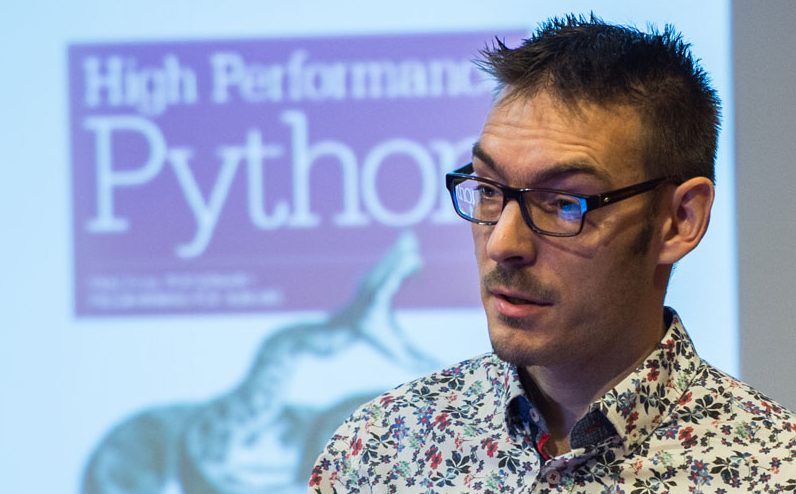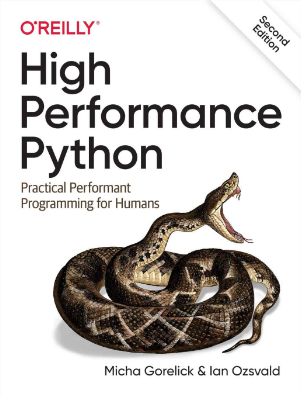Entrepreneurial Geekiness

“The Art and Science of Screencasts” podcast
Bob and Pat, long-time supporters of Joel’s Business of Software forums, were kind enough to interview me last week on the art and science of creating screencasts that sell your software.
The podcast (mp3) is 42 minutes long, they question me to help MicroISVs and tech companies learn more about using screencasts to demo and sell their software. I’ve written up a bit about it on the ProCasts blog.
“In show #21 Bob and Pat interview Ian Ozsvald, founder of ProCasts on the art and science, mystery and drama of creating great screeencasts for your startup’s product or web site. Ian generously shares his expertise about how to target your screencast, techniques that make a huge difference, a range of free and non-free tools, ways to improve your video communication abilities and more. If you want to know how to create a screencasts that shines, this is the show for you!”
Would you like a free eBook that covers all of this (and more)? ProCasts’ Little Book of Screencasting is in the works, to receive a notification when we release it send an email to: ebook_notify@procasts.co.uk
Ian is a Chief Interim Data Scientist via his Mor Consulting. Sign-up for Data Science tutorials in London and to hear about his data science thoughts and jobs. He lives in London, is walked by his high energy Springer Spaniel and is a consumer of fine coffees.
Adding PIL (Python Imaging Library) to Mac OS X
I continue my newbie MacBook exploits, currently I’m enjoying the fragmented installation process on a Mac…why is it harder to get stuff installed than on both Ubuntu (lovely apt-get!) and Windows?
Installing the Python Imaging Library takes a couple of steps. There is a 3rd party installer but it assumes you’ve installed their base Python2.5 install…but Py2.5 comes pre-installed on Macs now anyway.
Thankfully there are instructions here for adding a soft-link that lets the installer find the existing Python 2.5. Next, get the PIL diskimage (via Python Mac) and this time it’ll install happily.
Next I created ~/.bash_profile (not .bash_rc as suggested in the article – it didn’t get picked up) and added the required:
export PYTHONPATH=/Library/Frameworks/Python.framework/Versions/2.5/lib/python2.5/site-packages/and then I started Python, did ‘from PIL import Image’ and all was well. Woot-te-toot, now on with coding another ShowMeDo Club series (on File I/O for Python Beginners).
Ian is a Chief Interim Data Scientist via his Mor Consulting. Sign-up for Data Science tutorials in London and to hear about his data science thoughts and jobs. He lives in London, is walked by his high energy Springer Spaniel and is a consumer of fine coffees.
Undimming a monitor using libGaze?
I’m sitting here using my MacBook and the screen dims after a minute or so. I look back down from the movie I’m watching (Mutant Chronicles – dodgy sci-fi!) and the MacBook’s screen stays dim. With so much CPU power available, why can’t the screen auto-un-dim when I look at it?
The camera is looking at me…couldn’t it tell that my gaze is back on the Mac’s screen? The very recent libGaze by Sebastian Herholz seems like it ought to do the trick. It is open-source, released this year (2009) and runs on Linux and WinXP so it probably ought to run on a Mac just fine. For bonus points it has a Python interface.
The documentation is pretty solid (25 pages) and installation looks easy enough.
Anyone fancy some UI fame by writing a neato tool that dims the monitor when you’re not looking and brightens it when your attention is back on the screen?
Ian is a Chief Interim Data Scientist via his Mor Consulting. Sign-up for Data Science tutorials in London and to hear about his data science thoughts and jobs. He lives in London, is walked by his high energy Springer Spaniel and is a consumer of fine coffees.
BrightonJobDoom – 5k App Entry
My twitter robot (@BrightonJobDoom) has been in development for a month, now it tracks 5 job sites as it tracks Brighton’s descent into tribalism as we run out of local jobs.
Initially I was tracking just the Wired Sussex and TechCrunch sites, now I’ve added Chinwag, EscapeHatch and The Argus (within 10 miles, last week only, all jobs) newspaper. The first four are tech-focused, The Argus lists all the jobs in the main local paper.
Contrast the numbers shown on the feed (37, 0, 2, 12, 147) with my blog entry from Oct 07 on posting a tech job ad in Brighton. At that time Wired Sussex had 97 jobs (currently: 37), Sussex Digital’s job board has closed and The Argus was known to have pages of jobs, now just 147. The situation is definitely negative compared to two years ago, but hopefully it is on the mend (look at the history of the doom-feed).
This twitter-bot was written as an entry for the 5k competition on April 20th at our £5 App nights. Hopefully I’ll get time to cut the byte count down to get it under the 5120 byte limit in time for the competition!
Ian is a Chief Interim Data Scientist via his Mor Consulting. Sign-up for Data Science tutorials in London and to hear about his data science thoughts and jobs. He lives in London, is walked by his high energy Springer Spaniel and is a consumer of fine coffees.
Screencasting tutorials
Over on the ProCasts blog we’re building up a screencast tutorial series, planned to be 9 episodes long, that will teach anyone how to make a beautiful screencast that helps them explain their product to their new users.
By explaining your product you’re more likely to convince first-timer visitors to stick around and try out your tool.
We’re publishing a new episode every few days, the planned episodes are:
- Why do you need to screencast?
- Choosing your screencast software
- Editing your screencast
- Why adding music makes your screencast more professional
- How and why export screencasts to .flv, .mp4, .wmv, .avi and .swf formats
- Embedding screencasts in your site
- Getting your screencast seen by more people using sites like YouTube and Vimeo
- Pro tip – how to make your audio sound like it was recorded by a professional
- Pro tip – using an introductory animation and PowerPoint slides
We’re writing this series over the next few weeks to help encourage others to try screencasting. Once completed it’ll be converted into a free eBook entitled ProCasts’ Little Book of Screencasting, if you’d like your copy then email ebook_notify@procasts.co.uk
In part this series will be discussed in a podcast interview being recorded tonight for the Start-up Success series, we’re discussing the topics for the interview in Joel’s Business of Software forum.
Ian is a Chief Interim Data Scientist via his Mor Consulting. Sign-up for Data Science tutorials in London and to hear about his data science thoughts and jobs. He lives in London, is walked by his high energy Springer Spaniel and is a consumer of fine coffees.
Read my book

Oreilly High Performance Python by Micha Gorelick & Ian Ozsvald AI Consulting
Co-organiser
Trending Now
1Leadership discussion session at PyDataLondon 2024Data science, pydata, RebelAI2What I’ve been up to since 2022pydata, Python3Upcoming discussion calls for Team Structure and Buidling a Backlog for data science leadsData science, pydata, Python4My first commit to PandasPython5Skinny Pandas Riding on a Rocket at PyDataGlobal 2020Data science, pydata, PythonTags
Aim Api Artificial Intelligence Blog Brighton Conferences Cookbook Demo Ebook Email Emily Face Detection Few Days Google High Performance Iphone Kyran Laptop Linux London Lt Map Natural Language Processing Nbsp Nltk Numpy Optical Character Recognition Pycon Python Python Mailing Python Tutorial Robots Running Santiago Seb Skiff Slides Startups Tweet Tweets Twitter Ubuntu Ups Vimeo Wikipedia

